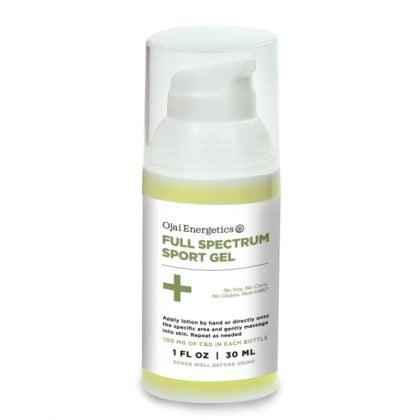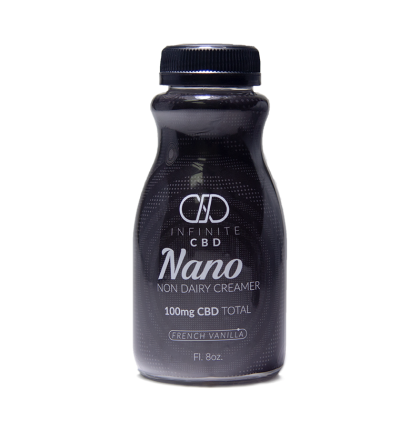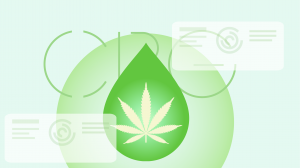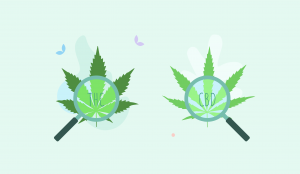| Total CBD: | 10 mg |
| Potency: | 0.3 mg/mL |
| Cost per mg CBD: | $0.45 |
| Extract Type: | Isolate |
| THC Content: | 0.0% |
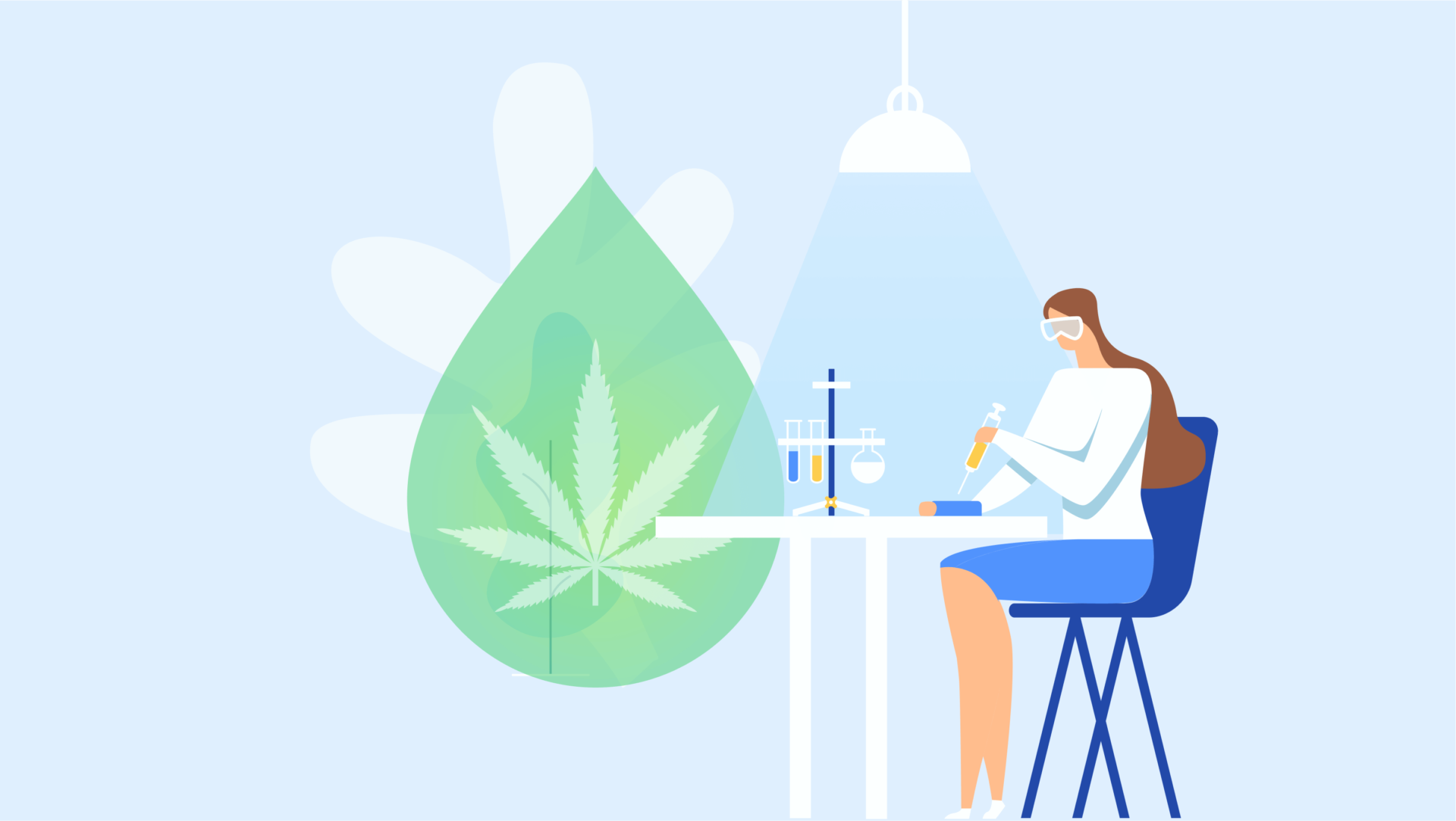
Evidence based
CBD Nano-Technology — Pseudoscience or Innovation?
If you’ve spent any time sifting through CBD products you may have heard the terms “nano CBD” or “water-soluble CBD”. What does this mean? Do they really work?
Can nano CBD really absorb into the bloodstream faster than normal CBD?
The CBD industry is constantly pushing the boundaries, this time with CBD nano-technology. Considered the newest ‘buzzword,’ some swear by the benefits of nano CBD, while others think it is a myth. Apparently, nano CBD is the newest way to increase the absorption of CBD into the bloodstream.
But, what does the science say? Is it possible for nano CBD to end up in your bloodstream in a higher amount compared to regular CBD? Most importantly, is nano CBD safe?
Let’s take a closer look.
What is Nano CBD?
Nanotechnology is the application “of extremely small things” conducted at the nanoscale — about 1 to 100 nanometers. Nanotechnology is pretty widespread in medicine, beauty products, biomaterials, robotics, and now organic compounds such as CBD.
Some companies refer to nano CBD as being “water-soluble CBD” — but this term isn’t scientifically correct. No CBD is water-soluble, it’s just that the smaller size of the molecules are able to appear water-soluble at the macro scale. We’ll get into how this works in more detail later.
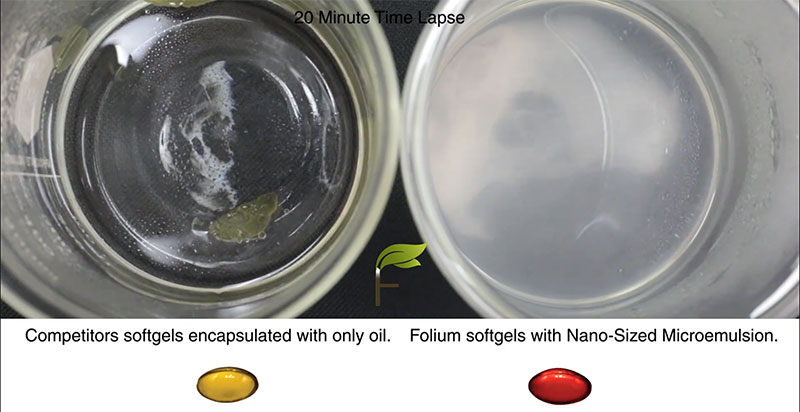
The Bioavailability of CBD
If you’ve been a CBD aficionado for a while now, you already know that CBD has a low bioavailability rate.
What is bioavailability? The bioavailability of a substance is the rate and degree at which it enters the bloodstream to produce an active effect.
The bioavailability rate of a substance depends on several factors, including the method of consumption. For example, the oral method of CBD consumption has a high average bioavailability rate of 20% and a low average rate of 4%. So, if you consume 100 mg of CBD, only 20% of it (20 mg) will end up in your bloodstream to produce an active effect [1].
Vaporized consumption has one of the highest bioavailability rates, between 34-46% [2].
With oral consumption being so low, and vaporized consumption being heavy on the lungs, consumers are looking for the middle ground. To some, that’s nano CBD.
Why Would Nano CBD Work Better Than Regular CBD?
The reason CBD manufacturers and consumers became interested in nano CBD is the nature of the compound itself. CBD is a hydrophobic molecule —which means it won’t mix with water.
In addition to being hydrophobic, cannabinoids such as CBD are also lipophilic, aka they combine or dissolve in lipids or fats. Therefore, CBD molecules don’t naturally bind with water molecules. This is the reason why bioavailability is so low.
Think of it this way, your mouth and digestive tract are watery, while CBD is oily. Since water and oil don’t mix, most of the CBD particles stay hidden in droplets until fully digested.
Additionally, because of the ‘first-pass metabolism,’ a large percentage of CBD that gets swallowed is processed and broken down in the intestines. After all these processes are finished, only a small percentage of CBD remains to be absorbed into the bloodstream.
But, when the CBD particles become small enough (nano), they look and act like a dissolved substance. This is why they’re called “water-soluble CBD,” a term only used for marketing purposes. CBD doesn’t, in fact, lose its hydrophobic nature to become water-soluble. The compound still follows the fat absorption pathway but is delivered as tiny particles.
It’s easier for the body to digest and absorb nutrients from oil that’s broken down into tiny drops. This is because smaller oil drops have increased surface contact with the body’s enzymes and absorptive tissue, helping the body absorb the CBD molecules sooner.
CBD still needs further processing in the body to be fully distributed to the bloodstream, as opposed to true water-soluble molecules that can be used by the body immediately.
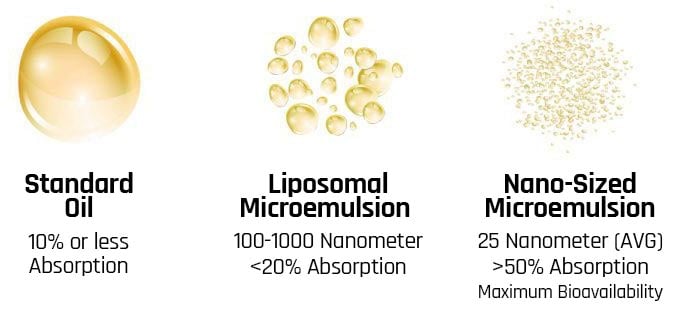
A 2016 study published in the European Journal of Pharmaceutics and Biopharmaceutics, looked into the efficiency of cannabinoid drugs when encapsulated. Researchers used a method to encapsulate cannabinoid drugs in nanostructured lipid carriers (NLCs).
Nanostructured lipid carriers (NLCs) is a smarter drug carrier system made up of physiological, biodegradable, and biocompatible lipid materials. NLCs is used for pharmaceutical applications for various routes of drug delivery, including oral, topical, ocular, etc. [3].
In short — encapsulating a drug with NLCs can help overcome complicated absorption issues, increase active bioavailability, decrease degradation, and target active tissue delivery.
This carrier system allows multiple routes of administration and offers advanced therapeutic efficacy and safety for more difficult-to-deliver drugs.
Researchers found that “NLC recovery, morphology, dimensional distribution and encapsulation efficiency are presented.” This means that smaller CBD particles are absorbed by the bloodstream more efficiently than regular-sized particles of CBD [4].
What The Research Says About Nano CBD
When manufactured correctly, nano CBD oil may increase the levels of CBD that enter the bloodstream. Although there is limited research, here’s what the science says about nano CBD.
A promising 2018 study published in the Journal of Pharmaceutical Sciences looked into the bioavailability of Sativex compared to a CBD/THC nanoemulsion in healthy male volunteers. The authors of the study noticed an increased overall absorption of the nanoemulsion [5].
A 2017 study published in the Journal of Controlled Release compared the bioavailability of a CBD/THC Piperine nanoemulsion with Sativex, an approved THC/CBD oromucosal spray in healthy volunteers.
The study showed a significant increase in absorption of THC and CBD compared to Sativex, but it should be noted that the nanoemulsion also included Piperine — a natural absorption enhancer [6].
Another 2016 study published in the Journal of Drug Development and Industrial Pharmacy looked at lipid nanoparticles as a platform for cannabinoid delivery.
The study focused on developing a valuable oral delivery carrier for a cannabinoid derivative CB13. According to the authors of the study, this derivative presents a therapeutic potential for certain chronic pain states that respond poorly to conventional analgesics. The lipid formulation used in this study proved to be a promising carrier for the oral delivery of the derivative [7].
This means that nanoparticles can be an effective asset for cannabinoid delivery to targeted tissues and help pain states that don’t react to conventional medicine.
Suggested Reading: Comprehensive List of CBD Research Studies.
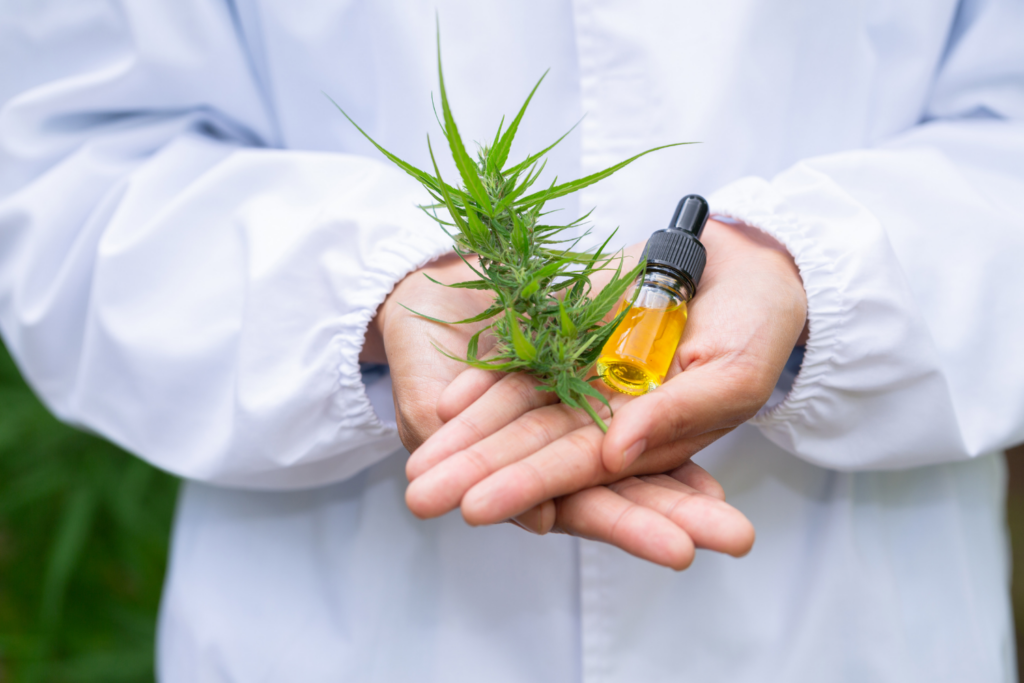
What Are the Risks of Nano CBD?
Nano CBD holds promise, but there is a lot of room for research, especially when it comes to the safety of such products.
Dr. Pratap Singh, assistant professor at the University of British Columbia, said that nano-encapsulation “should require more clinical trials,” and “more rigorous testing if the size is below 50 or 20 nanometers.” This warning has been issued because nanoparticles can enter human cells and accumulate in various organs, potentially leading to inflammation and tissue damage.
A report on nanotechnology by The Organisation for Economic Co-operation and Development (OECD) discussed the risks and benefits of using nanotechnology regarding pregnancy.
The report points out that: “it is not clear, whether nanoparticles can pass from a pregnant woman’s body via the placenta into the unborn child.”
As the particles decrease in size, the small particles start behaving very similarly to the bigger particles. However, as the particles become even tinier, up to a few hundred nanometers, they show some properties different to normal particle sizes such as passing through gaps they couldn’t pass through before and reaching tissues that weren’t previously expected.
These small particles can enter into different types of tissues, aside from those that they are targeting.
However, Dr. Singh advised consumers to be more concerned about whether a product is being made safely and is not toxic than whether or not it has nanoparticles.
Suggested Reading: What Are the Side Effects of CBD?
Summary: Is Nano CBD More Effective Than Regular CBD?
Research is scarce but promising — nano CBD is absorbed into the body more efficiently.
To consumers, this means they get more from less when using nano CBD.
However, there is still room for research, and CBD users should be careful when choosing their nano CBD brand. There is still some potential for risk when using nano CBD — but we can’t be sure until more research is conducted.
CBD brands that are selling nano CBD products tend to over-promise in order to sell their products. So, make sure to look for a company that offers rigorous third-party testing, and remains up to date with current research in the nano CBD space.
Top Nano CBD Products
-
-
Total CBD: 100 mg Potency Range: 3.33 mg/mL Cost per mg CBD: $0.47 Extract Type: Full-spectrum THC Content: Not Listed -
Total CBD: 100 mg Potency: 0.42 mg/mL Cost per mg CBD: $0.16 Extract Type: Nano CBD Isolate Flavors: French Vanilla & Hazelnut THC Content: 0.0%
References
- Huestis, M. A. (2007). Human Cannabinoid Pharmacokinetics. Chemistry & Biodiversity, 4(8). doi: 10.1002/cbdv.200790152
- Paudel, K. (2010). Cannabidiol bioavailability after nasal and transdermal application: effect of permeation enhancers. Drug Development and Industry Pharmacy, 36(9). doi: 10.3109/03639041003657295.
- Esposito, E. (2016). Encapsulation of cannabinoid drugs in nanostructured lipid carriers. European Journal of Pharmaceutics and Biopharmaceutics, 102, 87–91. doi: https://doi.org/10.1016/j.ejpb.2016.03.005
- Atsmon, J. (2018). PTL401, a New Formulation Based on Pro-Nano Dispersion Technology, Improves Oral Cannabinoids Bioavailability in Healthy Volunteers. Journal of Pharmaceutical Sciences, 107(5). doi: 10.1016/j.xphs.2017.12.020.
- Cherniakov, I. (2017). Piperine-pro-nanolipospheres as a novel oral delivery system of cannabinoids: Pharmacokinetic evaluation in healthy volunteers in comparison to buccal spray administration. Journal of Controlled Release: Official Journal of the Controlled Release Society, 266, 1–7. doi: 10.1016/j.jconrel.2017.09.011.
- Iqbal, M. (2012). Nanostructured lipid carriers system: recent advances in drug delivery. Journal of Drug Targeting, 20(10), 813–30. doi: 10.3109/1061186X.2012.716845
- Duran-Lobato, M. (2016). Lipid nanoparticles as an emerging platform for cannabinoid delivery: physicochemical optimization and biocompatibility. Drug Development and Industrial Pharmacy, 42(2), 190–8. doi: 10.3109/03639045.2015.1038274.


